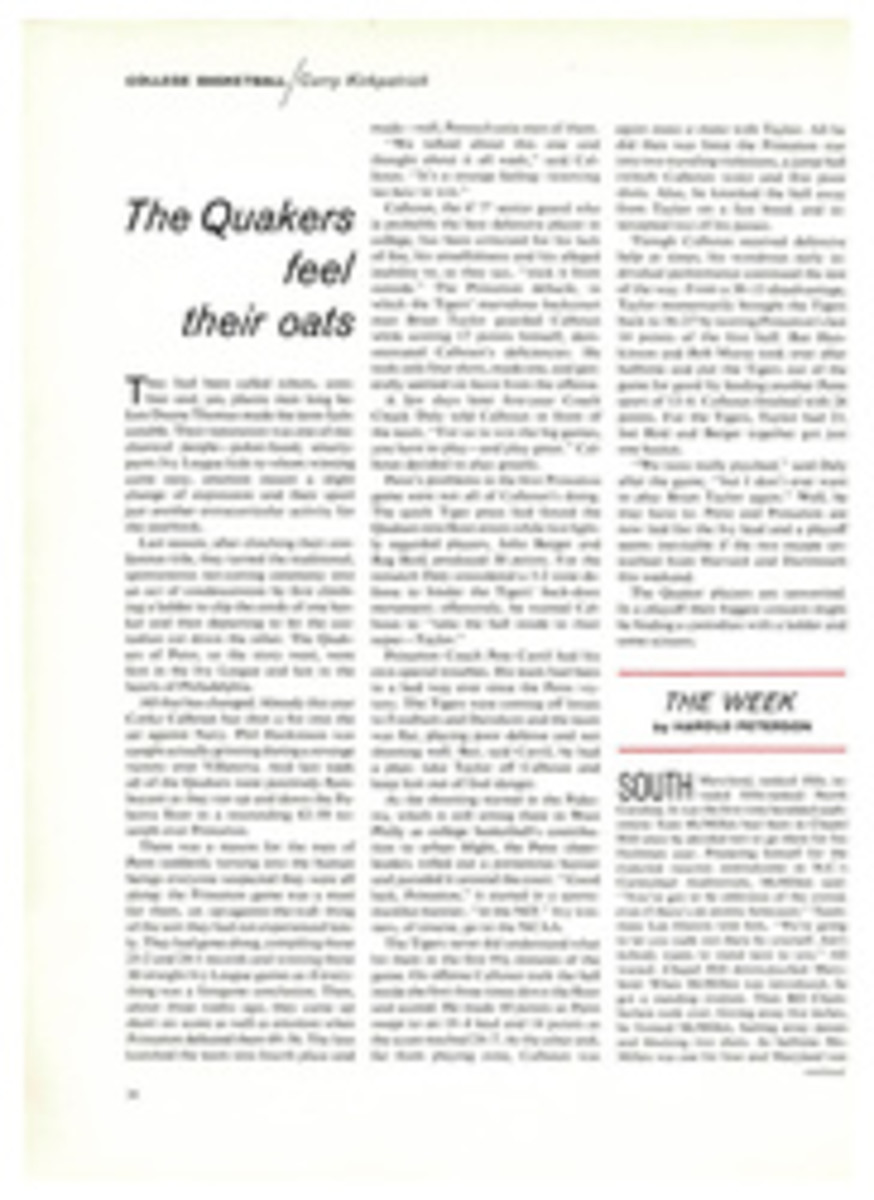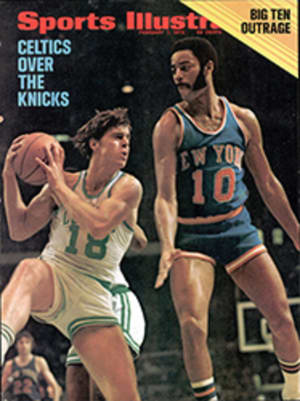
LETTER FROM THE PUBLISHER
If he were alive today, Mark Twain might want to rephrase his epigram about American cities. "In Boston," he wrote in 1899, "they ask, How much does he know? In New York, How much is he worth? In Philadelphia, Who were his parents?" In modern Boston, Twain would find, they are more likely to ask, How many points did he score?
The surest proof of this shift is the preeminence of Hub teams and players over the last few decades—and their frequent appearance during the last 18 months in SI. This week's article by Peter Carry on the Celtics (page 12) makes more than 20 times we have focused on Boston athletics since Frank Deford's definitive study of the city's sports scene (The Hub Men) in July 1970. And we have chosen Bostonians as Sportsman of the Year in three of the last five years.
What makes Boston such fertile sporting soil? Considering its population (628,000), heritage (Cabots, Lowells and Lodges) and symbolism (beans, codfish and Irish politics), there seems little enough to explain the phenomenon. Still, there it is. Boston is the most sports-happy community of its size in America, and loving every minute of it.
Such municipal mania generally finds a way of communicating itself, and in Boston's case this is done through its superlative athletes—Ted Williams, Bill Russell, Carl Yastrzemski, John Havlicek, Bobby Orr—and through its native sons who go forth like evangelists to spread the word. At SI, the word is disseminated by Mark Mulvoy and Dan Levin—who this week happens to be writing from Memphis (page 22).
The winter scene is liveliest in Boston. It is the only city in the U.S. in which it is possible to watch professional hockey almost seven nights a week. When the first-place Bruins are not in town, their first-place farm club, the Braves, entertains crowds of 13,000 at Boston Garden. And the college hockey champion is Boston University.
As for basketball, the Celtics played to a sellout 15,315 against the Knicks last week, just as in the Russell-Cousy days. Even Boston football is enjoying a renaissance (it is reaching back a way, but New England did dominate the sport until the 1930s). The heroics of Jim Plunkett have given the flocking fans of Foxboro new hope and more than occasional victory.
For Mulvoy, a product of the city's Dorchester section, covering an event in Boston is a kind of happening. His peregrinations on Bruin game day are instructive to anyone planning a visit. He generally lunches at Durgin Park (specialties: prime ribs, corn bread and Indian pudding), has a pregame dinner at the Union Oyster House and joins friends for a postgame drink at The Branding Iron. On nongame nights, Mulvoy likes a leisurely dinner at Jimmy's Harborside.
Levin, who grew up in Brighton and suburban Newton, is an authority on the Red Sox. His knowledge transcends mere statistics, though he can quote them impressively. (How many American League batting champions have come from Boston in the last 15 years? Answer: seven.) What Levin truly savors are the human insights and lore surrounding his favorite team. "Once between games of a doubleheader," he recalls, "Ted Williams walked through the door in the left-field fence at Fenway Park—spikes, uniform and all—and went down the street to the White Tower for an ice-cream cone."
Levin may have touched on the essential quality that makes Boston's sportsmen what they are—demonstrably human. They play, scrap, love, drink and eat with gusto. They pout when they lose and cheer when they win. And occasionally they step down the street for an ice-cream cone.

